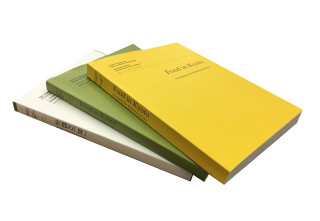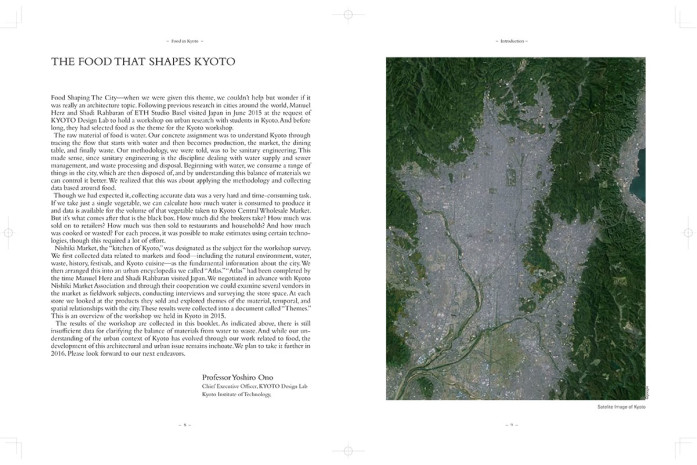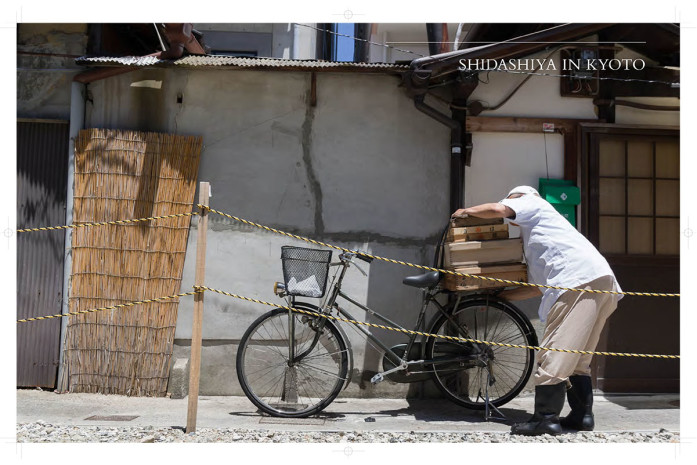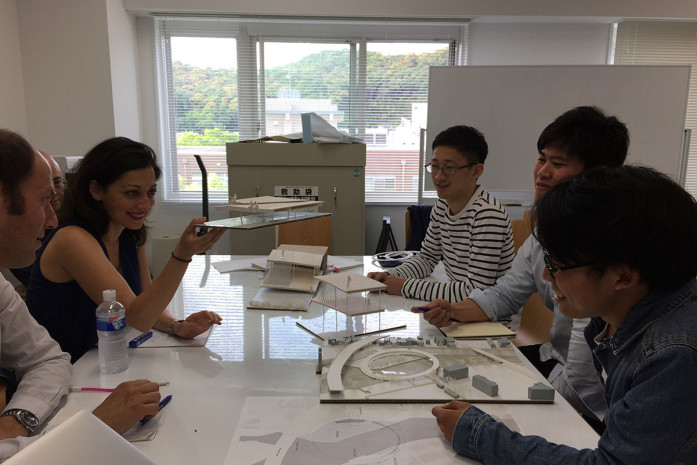KYOTO Design Lab

Workshop & Lecture
Shadi Rahbaran and Manuel Herz
in collaboration with KYOTO Design Lab
Kyoto Institute of Technology KIT
An urban research workshop series on Food shaping the City
Case study Kyoto
June 2015 - on going
Food in Kyoto
Energy-Water-Food-Land-Waste represent some of the material flows into and out of our urban space. Investigating this urban metabolism is a means of understanding the territorial dimension of the urban condition and analyzing the larger forces that form our cities: How does food shape our cities? How do we feed cities and regions? How and where is food produced? What is its relationship to water? How does food travel from its place of production, through processing centers into markets, shops, eateries and homes? What kind of waste is produced? For our urban metabolism research and design workshops at Kyoto Design Lab we chose to start with studying Kyoto’s unique food culture - from production to consumption. Nishiki Market known as “Kyoto’s kitchen” and the Kyoto Central Wholesale Market are the focus of this investigation. Our goal is to understand the regional context of Kyoto by analyzing the flow of foodstuff for which these two markets act as central nodes. Our next investigation within the cycle of urban metabolism in parallel will focus on the impact of Water shaping Kyoto.
Shadi Rahbaran and Manuel Herz
in collaboration with KYOTO Design Lab
Kyoto Institute of Technology KIT
An urban research workshop series on Food shaping the City
Case study Kyoto
June 2015 - on going
Food in Kyoto
Energy-Water-Food-Land-Waste represent some of the material flows into and out of our urban space. Investigating this urban metabolism is a means of understanding the territorial dimension of the urban condition and analyzing the larger forces that form our cities: How does food shape our cities? How do we feed cities and regions? How and where is food produced? What is its relationship to water? How does food travel from its place of production, through processing centers into markets, shops, eateries and homes? What kind of waste is produced? For our urban metabolism research and design workshops at Kyoto Design Lab we chose to start with studying Kyoto’s unique food culture - from production to consumption. Nishiki Market known as “Kyoto’s kitchen” and the Kyoto Central Wholesale Market are the focus of this investigation. Our goal is to understand the regional context of Kyoto by analyzing the flow of foodstuff for which these two markets act as central nodes. Our next investigation within the cycle of urban metabolism in parallel will focus on the impact of Water shaping Kyoto.














